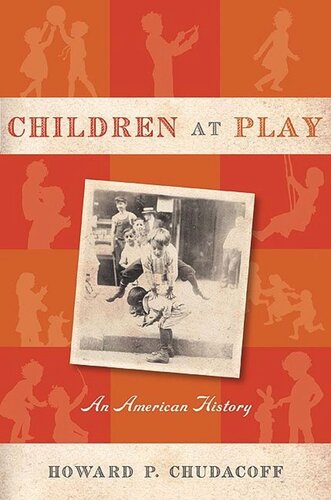

Most ebook files are in PDF format, so you can easily read them using various software such as Foxit Reader or directly on the Google Chrome browser.
Some ebook files are released by publishers in other formats such as .awz, .mobi, .epub, .fb2, etc. You may need to install specific software to read these formats on mobile/PC, such as Calibre.
Please read the tutorial at this link: https://ebookbell.com/faq
We offer FREE conversion to the popular formats you request; however, this may take some time. Therefore, right after payment, please email us, and we will try to provide the service as quickly as possible.
For some exceptional file formats or broken links (if any), please refrain from opening any disputes. Instead, email us first, and we will try to assist within a maximum of 6 hours.
EbookBell Team

5.0
20 reviewsHear the author interview on NPR's Morning Edition
If you believe the experts, “child’s play”; is serious business. From sociologists to psychologists and from anthropologists to social critics, writers have produced mountains of books about the meaning and importance of play. But what do we know about how children actually play, especially American children of the last two centuries? In this fascinating and enlightening book, Howard Chudacoff presents a history of children’s play in the United States and ponders what it tells us about ourselves.
Through expert investigation in primary sources-including dozens of children's diaries, hundreds of autobiographical recollections of adults, and a wealth of child—rearing manuals—along with wide—ranging reading of the work of educators, journalists, market researchers, and scholars-Chudacoff digs into the “underground” of play. He contrasts the activities that genuinely occupied children's time with what adults thought children should be doing.
Filled with intriguing stories and revelatory insights, Children at Play provides a chronological history of play in the U.S. from the point of view of children themselves. Focusing on youngsters between the ages of about six and twelve, this is history “from the bottom up.” It highlights the transformations of play that have occurred over the last 200 years, paying attention not only to the activities of the cultural elite but to those of working-class men and women, to slaves, and to Native Americans. In addition, the author considers the findings, observations, and theories of numerous social scientists along with those of fellow historians.
Chudacoff concludes that children's ability to play independently has attenuated over time and that in our modern era this diminution has frequently had unfortunate consequences. By examining the activities of young people whom marketers today call “tweens,” he provides fresh historical depth to current discussions about topics like childhood obesity, delinquency, learning disability, and the many ways that children spend their time when adults aren’t looking.